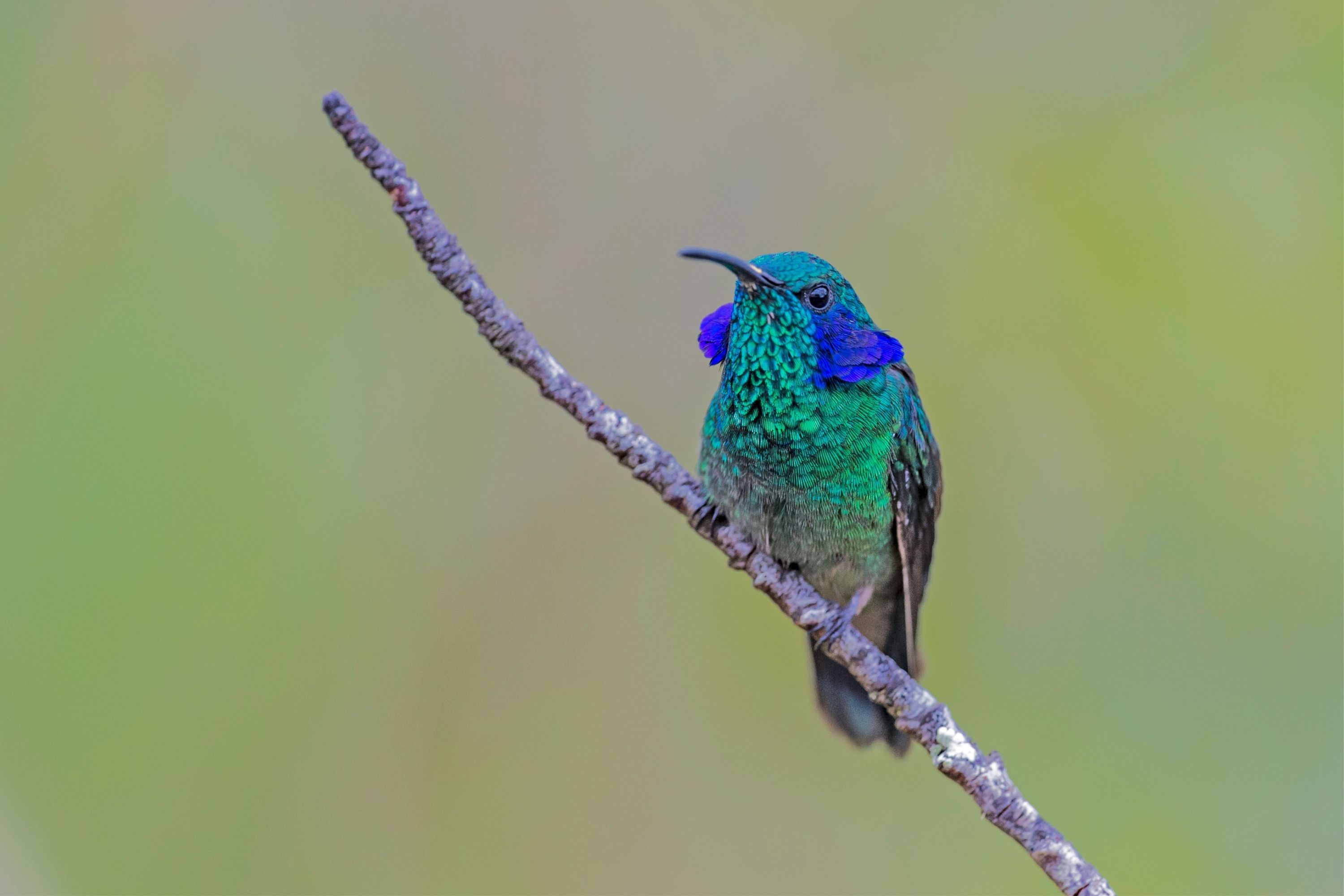Mexican violetear
(Colibri thalassinus)

Description
The Mexican violetear (Colibri thalassinus) is a medium-sized, metallic green hummingbird species commonly found in forested areas from Mexico to Nicaragua. This species, together with the lesser violetear were previously considered conspecific, and together called the green violetear. The Mexican violetear belongs to the order Apodiformes. Hummingbirds share this order with the swifts, such as the white-collared swift. The name Apodiformes is derived from the Greek words "a pous," meaning "without foot." While apodiforms do in fact have feet, they are quite small and their legs are short and relatively weak. Many birds in this order cannot walk, and thus rarely if ever land on the ground, where they are not well-adapted to forage or to escape from predators. Members of this order spend a majority of their active time in the air. The Mexican violetear is roughly medium-sized by hummingbird standards. It averages around 9.7 to 12 cm (3.8 to 4.7 in) in total length. Its bill is black and mostly straight with only a slight downward curve and measures from 1.8 to 2.5 cm (0.71 to 0.98 in). The body mass can vary from 4.8 to 5.6 g (0.17 to 0.20 oz). Among standard measurements, the wing chord is 5.8 to 6.8 cm (2.3 to 2.7 in) and the tail is 3.5 to 4.3 cm (1.4 to 1.7 in). The bird has a wingspan of 12 cm. It is shining green above with a glittering violet ear-patch on the sides of its neck. Its throat and chest are a glittering green with a shining green belly. The tail is a metallic blue-green with more bronzy central feathers and a prominent black subterminal band. The Mexican violetear breeds from the highlands of southern Mexico south to Nicaragua. It is a rare but annual nonbreeding visitor to the United States, primarily southern and central Texas, with scattered records as far north as extreme southern Canada. According to IUCN C. thalissinus can be found in much of montane areas of the northern Andes, stretching from Bolivia to Venezuela. Common habitats for the Mexican violetear is in the canopy and borders of subtropical and lower temperate forest, secondary woodland and scrub, and clearings and gardens in the subtropical zone. It is recorded mostly between altitudes of 1,200 to 2,300 m (3,900 to 7,500 ft), though they will sometimes wander as far down as 500 m (1,600 ft) in search of food sources. It generally prefers more humid and high-altitude areas, such as cloud forests.
Taxonomic tree:







